Daily News
by Gail Helmer
[ Send Us News | Archives ]
New Screens: LO:MAC
Here are a couple of new screens from Ubi Softs, Lock On: Modern Air Combat.
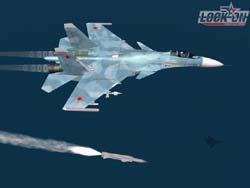
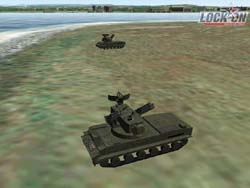
Forgotten Battles Development Update
Oleg Maddox has released more screens from the IL-2 add-on, The Forgotten Battles. The screens feature the work in progress of the map in Leningrad, and various shots of the Bf-110G. IL2-Sturmovik: The Forgotten Battles will include two new maps for Finland and Hungary, expanding the battlefield for both single and multiplayer modes. It will also feature more than 20 new single player missions and ten cooperative multiplayer missions. The Forgotten Battles is expected to ship to retail stores worldwide in Fall 2002. For more on Forgotten Battles, check out COMBATSIM's interview with Oleg.
New Screens: Raven Shield
We have 3 new screens from Rainbow Six: Raven Shield, the latest in squad-based tactical shooter series. Developed by Ubi Soft's Montreal studio, in close collaboration with Red Storm Entertainment, Rainbow Six: Raven Shield features a brand new Tom Clancy storyline in which Team RAINBOW is led all over the world in a string of dramatic operations. The game will utilize graphics technology provided by the next-generation Unreal engine to power 15 new single-player missions that include the discovery of a cache of biological weapons and stopping an armed gang from terrorizing a London bank. For more on Raven Shield, check out COMBATSIM's interview with the development team.
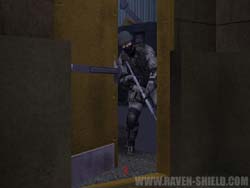
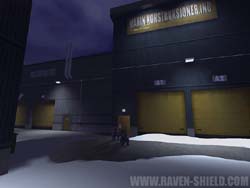
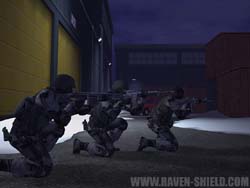
Military News
Northrop Grumman To Enhance Support Of B-2 Stealth Bomber
Northrop Grumman Corporation's Integrated Systems sector, prime contractor for the B-2 stealth bomber, has entered into an agreement with the U.S. Air Force that will enhance support of the B-2 weapon system by a joint government-contractor team.
Called the Total System Support Partnership (TSSP), the agreement will add supply chain management and support integration to Northrop Grumman's work under the existing B-2 Flexible Acquisition and Sustainment Team contract. Northrop Grumman employees will be able to work more closely with Air Force logistics personnel to support B-2 operational readiness.
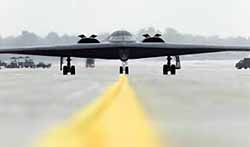
"The TSSP agreement reflects the Air Force's confidence in Northrop Grumman's continuing support of the B-2," said Paul Marchisotto, vice president and B-2 program manager for Northrop Grumman Integrated Systems. "It will enhance support of the warfighter by leveraging the strengths of the government and the prime contractor to improve response time and reduce costs."
Under TSSP, Northrop Grumman personnel will be involved in daily B-2 support activities to anticipate needs and expedite acquisition of items that could affect mission capability rates. They will perform these functions during the flight line review of pre- and post-flight aircraft records, informal and formal interaction with flight line maintenance personnel and data monitoring in the consolidated aircraft maintenance system at Whiteman Air Force Base, the operational home of the B-2 fleet. This early insight into trends will enable the government-industry support team to take a more proactive approach before problems occur.
The B-2 Spirit is a strategic, long-range multirole bomber. Its low observable characteristics make it the most survivable aircraft in the world, able to penetrate hostile air space without being detected.
Australian Group Scouts Possible F-35 Work
Australian government and aerospace industry representatives spent Thursday at Lockheed Martin's Fort Worth plant discussing potential opportunities for Australian companies to participate in the F-35 Joint Strike Fighter program. Australia has announced its intention to join the program's development phase in late 2002.
Lockheed Martin Aeronautics Co., a business area of Lockheed Martin Corp., is the prime contractor to develop the next-generation F-35 JSF for the United States Air Force, Navy and Marine Corps, and seven allied nations. Australia would be the eighth international partner to join the F-35 System Development and Demonstration (SDD) phase and would have the opportunity to develop and supply parts and subsystems, influence the aircraft's design and place representatives in the government's JSF Program Office.
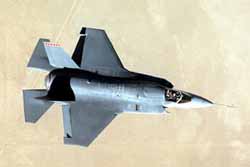
Fourteen Australian government and 26 Australian industry representatives traveled to Fort Worth for a series of F-35 technical presentations, and discussions on potential Australian industrial participation in the program. Activities during the visit included a program overview, demonstrations of the F-35 cockpit and explanations of specific aircraft systems. A Lockheed Martin F-35 team has traveled to Australia twice this year to evaluate companies' potential contributions to the program.
"Australia has a strong and well-established aerospace industrial base," said Tom Burbage, Lockheed Martin executive vice president and JSF program general manager. "We know the Australians manufacture very high quality, cost-competitive products, and we expect them to compete effectively within the F-35 program's best-value criteria."
To gain JSF work on the highly competitive F-35 program, suppliers must prove that they offer "best value," a combination of quality, affordability and other development and production criteria.
The F-35 is a stealthy (radar-evading), supersonic multirole fighter designed to meet the U.S. government's requirements for a new generation of transformational weapons. The single-engine JSF will be manufactured in three versions: a conventional-takeoff-and-landing (CTOL) variant for the U.S. Air Force, an aircraft-carrier version (CV) for the U.S. Navy, and a short-takeoff/vertical landing (STOVL) version for the U.S. Marine Corps.
The cornerstone of the F-35 is affordability, achieved in large part through a very high level of common parts and systems across the three versions of the aircraft.
The F-35 is designed to replace aging fighter inventories, including U.S. Air Force A-10s and F-16s, U.S. Navy F/A-18s, U.S. Marine Corps AV-8B Harriers and F/A-18s, and United Kingdom Harrier GR.7s and Sea Harriers.
Boeing Delivers 150th T-45 Goshawk
Boeing delivered the 150th T-45 Goshawk training aircraft to the United States Navy in a ceremony here today. The aircraft, a T-45C, is headed to Training Wing 1, Squadron 7, based at Naval Air Station Meridian, Miss. Rear Adm. John Boyington Jr., chief of Naval Aviation Training, accepted delivery of the aircraft. "The delivery of this aircraft marks a significant milestone achieved by the CNATRA, NAVAIR and Boeing team," said Boyington. "The continued production of T-45s will be the cornerstone within CNATRA that will train future strike naval aviators until 2025 and beyond."
Bob Feldmann, Boeing T-45 manager, said, "It's great to have the U.S. Navy and Marine Corps, our supplier partners and the Boeing team here to celebrate this milestone. Without a team effort, the successes of this program are not possible."

The Goshawk is the center of the T-45 training system, which was designed for undergraduate jet aircraft training. The T-45 A/C Goshawk two-seat, carrier-suitable aircraft is augmented by operational and instrument flight simulators, computer-assisted classroom instruction and a training integration system that tracks all training activities.
"The delivery of this aircraft marks one of many successful milestones achieved by the T45TS program," said Capt. David Wooten, T-45 program manager for the U.S. Navy. "Whether it has been the outstanding results achieved using Contractor Logistic Support, the analog-to-digital conversion of the cockpit, Cockpit 21, or the eventual replacement of the T-2 Buckeye, the CNATRA, NAVAIR and Boeing team makes the extraordinary seem commonplace."
Contractor logistics support is an integral part of the T45TS. Boeing provides 100 percent of the maintenance of all system elements (air and ground) and other necessary logistics support at Naval Air Station Meridian, Miss., and Naval Air Station Kingsville, Texas. This totally integrated training system is the only one of its kind.
To date, more than 1,600 pilots have earned their Navy wings in the Goshawk. Current U.S. Navy requirements call for 234 T-45 Goshawks. Undergraduate jet pilot training will continue until at least 2035.
F-16 Simulator Goes High Energy
F-16 Fighting Falcon pilots here are honing their laser firing skills against airborne targets while flying their aircraft -- without ever leaving the ground.
Pilots are using the high energy laser fighter simulator, an F-16 simulator modified to integrate a high energy laser weapon model into an F-16's program.
The simulator evaluates design parameters for an actual high-energy laser weapon system and helps an operator get familiar with a directed energy weapon system, according to Rudy Martinez, Air Force Research Laboratory directed energy directorate strategic planner. The system can also be used to develop tactics and a concept of operations.
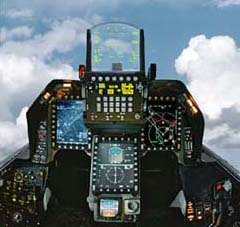
"It's imperative to have a better understanding of what lasers can do for our fighter pilots," said Col. Mark Stephen, directed energy directorate deputy director. "By providing the warfighter with the best technology, we ensure the protection of the flyer and better defense for our national interests."
Air Force research laboratory officials are funding and developing the high energy laser fighter simulator in conjunction with Theater Aerospace Command and Control Simulation Facility experts. Lockheed Martin, working with the other agencies is currently investigating the use of the high energy laser on the Joint Strike Fighter, according to Martinez.
Currently, pilots from the New Mexico Air National Guard's 150th Fighter Wing provide feedback to the simulator's developers.
"Their comments and suggestions on a variety of issues facing this new weapon system are integrated into the development," Martinez said.
One simulator model is capable of air-to-air engagements while the other simulates air-to-ground engagements, he said.
"The realistic models include atmospheric transmission losses, target lethality engagement parameters and laser system limits and ranges."
According to Martinez, the ultimate goal is to have the simulator participate in war games to determine the utility of using a high energy laser against conventional warfare weapons. The simulator is scheduled to be ready for system evaluation this year. (Courtesy of Air Force Material Command News Service)
[ Send Us News | Archives ]
by Gail Helmer
Friday August 09, 2002
- New Screens: LO:MAC
- Forgotten Battles Development Update
- New Screens: Raven Shield
- Northrop Grumman To Enhance Support Of B-2
- Australian Group Scouts Possible F-35 Work
- Boeing Delivers 150th T-45 Goshawk
- F-16 Simulator Goes High Energy
New Screens: LO:MAC
Here are a couple of new screens from Ubi Softs, Lock On: Modern Air Combat.


Forgotten Battles Development Update
Oleg Maddox has released more screens from the IL-2 add-on, The Forgotten Battles. The screens feature the work in progress of the map in Leningrad, and various shots of the Bf-110G. IL2-Sturmovik: The Forgotten Battles will include two new maps for Finland and Hungary, expanding the battlefield for both single and multiplayer modes. It will also feature more than 20 new single player missions and ten cooperative multiplayer missions. The Forgotten Battles is expected to ship to retail stores worldwide in Fall 2002. For more on Forgotten Battles, check out COMBATSIM's interview with Oleg.
New Screens: Raven Shield
We have 3 new screens from Rainbow Six: Raven Shield, the latest in squad-based tactical shooter series. Developed by Ubi Soft's Montreal studio, in close collaboration with Red Storm Entertainment, Rainbow Six: Raven Shield features a brand new Tom Clancy storyline in which Team RAINBOW is led all over the world in a string of dramatic operations. The game will utilize graphics technology provided by the next-generation Unreal engine to power 15 new single-player missions that include the discovery of a cache of biological weapons and stopping an armed gang from terrorizing a London bank. For more on Raven Shield, check out COMBATSIM's interview with the development team.



Military News
Northrop Grumman To Enhance Support Of B-2 Stealth Bomber
Northrop Grumman Corporation's Integrated Systems sector, prime contractor for the B-2 stealth bomber, has entered into an agreement with the U.S. Air Force that will enhance support of the B-2 weapon system by a joint government-contractor team.
Called the Total System Support Partnership (TSSP), the agreement will add supply chain management and support integration to Northrop Grumman's work under the existing B-2 Flexible Acquisition and Sustainment Team contract. Northrop Grumman employees will be able to work more closely with Air Force logistics personnel to support B-2 operational readiness.

"The TSSP agreement reflects the Air Force's confidence in Northrop Grumman's continuing support of the B-2," said Paul Marchisotto, vice president and B-2 program manager for Northrop Grumman Integrated Systems. "It will enhance support of the warfighter by leveraging the strengths of the government and the prime contractor to improve response time and reduce costs."
Under TSSP, Northrop Grumman personnel will be involved in daily B-2 support activities to anticipate needs and expedite acquisition of items that could affect mission capability rates. They will perform these functions during the flight line review of pre- and post-flight aircraft records, informal and formal interaction with flight line maintenance personnel and data monitoring in the consolidated aircraft maintenance system at Whiteman Air Force Base, the operational home of the B-2 fleet. This early insight into trends will enable the government-industry support team to take a more proactive approach before problems occur.
The B-2 Spirit is a strategic, long-range multirole bomber. Its low observable characteristics make it the most survivable aircraft in the world, able to penetrate hostile air space without being detected.
Australian Group Scouts Possible F-35 Work
Australian government and aerospace industry representatives spent Thursday at Lockheed Martin's Fort Worth plant discussing potential opportunities for Australian companies to participate in the F-35 Joint Strike Fighter program. Australia has announced its intention to join the program's development phase in late 2002.
Lockheed Martin Aeronautics Co., a business area of Lockheed Martin Corp., is the prime contractor to develop the next-generation F-35 JSF for the United States Air Force, Navy and Marine Corps, and seven allied nations. Australia would be the eighth international partner to join the F-35 System Development and Demonstration (SDD) phase and would have the opportunity to develop and supply parts and subsystems, influence the aircraft's design and place representatives in the government's JSF Program Office.

Fourteen Australian government and 26 Australian industry representatives traveled to Fort Worth for a series of F-35 technical presentations, and discussions on potential Australian industrial participation in the program. Activities during the visit included a program overview, demonstrations of the F-35 cockpit and explanations of specific aircraft systems. A Lockheed Martin F-35 team has traveled to Australia twice this year to evaluate companies' potential contributions to the program.
"Australia has a strong and well-established aerospace industrial base," said Tom Burbage, Lockheed Martin executive vice president and JSF program general manager. "We know the Australians manufacture very high quality, cost-competitive products, and we expect them to compete effectively within the F-35 program's best-value criteria."
To gain JSF work on the highly competitive F-35 program, suppliers must prove that they offer "best value," a combination of quality, affordability and other development and production criteria.
The F-35 is a stealthy (radar-evading), supersonic multirole fighter designed to meet the U.S. government's requirements for a new generation of transformational weapons. The single-engine JSF will be manufactured in three versions: a conventional-takeoff-and-landing (CTOL) variant for the U.S. Air Force, an aircraft-carrier version (CV) for the U.S. Navy, and a short-takeoff/vertical landing (STOVL) version for the U.S. Marine Corps.
The cornerstone of the F-35 is affordability, achieved in large part through a very high level of common parts and systems across the three versions of the aircraft.
The F-35 is designed to replace aging fighter inventories, including U.S. Air Force A-10s and F-16s, U.S. Navy F/A-18s, U.S. Marine Corps AV-8B Harriers and F/A-18s, and United Kingdom Harrier GR.7s and Sea Harriers.
Boeing Delivers 150th T-45 Goshawk
Boeing delivered the 150th T-45 Goshawk training aircraft to the United States Navy in a ceremony here today. The aircraft, a T-45C, is headed to Training Wing 1, Squadron 7, based at Naval Air Station Meridian, Miss. Rear Adm. John Boyington Jr., chief of Naval Aviation Training, accepted delivery of the aircraft. "The delivery of this aircraft marks a significant milestone achieved by the CNATRA, NAVAIR and Boeing team," said Boyington. "The continued production of T-45s will be the cornerstone within CNATRA that will train future strike naval aviators until 2025 and beyond."
Bob Feldmann, Boeing T-45 manager, said, "It's great to have the U.S. Navy and Marine Corps, our supplier partners and the Boeing team here to celebrate this milestone. Without a team effort, the successes of this program are not possible."

The Goshawk is the center of the T-45 training system, which was designed for undergraduate jet aircraft training. The T-45 A/C Goshawk two-seat, carrier-suitable aircraft is augmented by operational and instrument flight simulators, computer-assisted classroom instruction and a training integration system that tracks all training activities.
"The delivery of this aircraft marks one of many successful milestones achieved by the T45TS program," said Capt. David Wooten, T-45 program manager for the U.S. Navy. "Whether it has been the outstanding results achieved using Contractor Logistic Support, the analog-to-digital conversion of the cockpit, Cockpit 21, or the eventual replacement of the T-2 Buckeye, the CNATRA, NAVAIR and Boeing team makes the extraordinary seem commonplace."
Contractor logistics support is an integral part of the T45TS. Boeing provides 100 percent of the maintenance of all system elements (air and ground) and other necessary logistics support at Naval Air Station Meridian, Miss., and Naval Air Station Kingsville, Texas. This totally integrated training system is the only one of its kind.
To date, more than 1,600 pilots have earned their Navy wings in the Goshawk. Current U.S. Navy requirements call for 234 T-45 Goshawks. Undergraduate jet pilot training will continue until at least 2035.
F-16 Simulator Goes High Energy
F-16 Fighting Falcon pilots here are honing their laser firing skills against airborne targets while flying their aircraft -- without ever leaving the ground.
Pilots are using the high energy laser fighter simulator, an F-16 simulator modified to integrate a high energy laser weapon model into an F-16's program.
The simulator evaluates design parameters for an actual high-energy laser weapon system and helps an operator get familiar with a directed energy weapon system, according to Rudy Martinez, Air Force Research Laboratory directed energy directorate strategic planner. The system can also be used to develop tactics and a concept of operations.

"It's imperative to have a better understanding of what lasers can do for our fighter pilots," said Col. Mark Stephen, directed energy directorate deputy director. "By providing the warfighter with the best technology, we ensure the protection of the flyer and better defense for our national interests."
Air Force research laboratory officials are funding and developing the high energy laser fighter simulator in conjunction with Theater Aerospace Command and Control Simulation Facility experts. Lockheed Martin, working with the other agencies is currently investigating the use of the high energy laser on the Joint Strike Fighter, according to Martinez.
Currently, pilots from the New Mexico Air National Guard's 150th Fighter Wing provide feedback to the simulator's developers.
"Their comments and suggestions on a variety of issues facing this new weapon system are integrated into the development," Martinez said.
One simulator model is capable of air-to-air engagements while the other simulates air-to-ground engagements, he said.
"The realistic models include atmospheric transmission losses, target lethality engagement parameters and laser system limits and ranges."
According to Martinez, the ultimate goal is to have the simulator participate in war games to determine the utility of using a high energy laser against conventional warfare weapons. The simulator is scheduled to be ready for system evaluation this year. (Courtesy of Air Force Material Command News Service)
